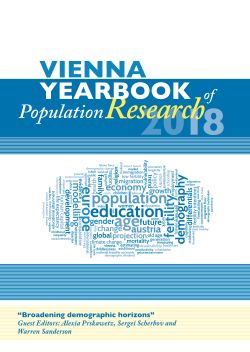
Vienna Yearbook of Population Research 2018, pp. 221-234, 2019/04/25
Broadening demographic horizons

In 2016, the Joint Research Centre (JRC) of the European Commission and the International Institute for Applied Systems Analysis (IIASA) agreed to form a partnership, establishing the Centre of Expertise on Population and Migration (CEPAM). The work presented here summarises the first results published by CEPAM. The results reveal clear momentum towards population ageing, and how migration has limited ability to influence the population structure of the EU, especially in the long-run. On the other hand, boosting labour force participation can nullify expected rises in the dependency ratio from population ageing. Globally, the findings show the future of population growth and socio-economic development will be determined by the expansion of education, particularly among girls in Africa. Scenarios of either rapid or stalled development illustrate a large range of possible futures for world population by 2100.